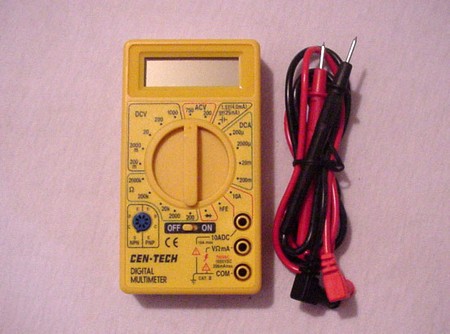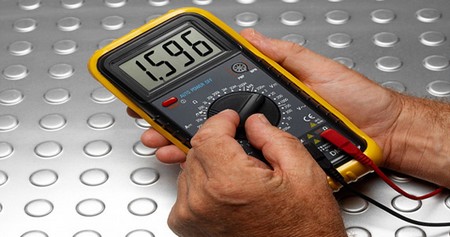In an electric circuit, the instrument, which is used to determine the differences of electrical potential between two end points, is known as voltmeter. The voltmeter is of two types one are analog voltmeter and the other is digital voltmeter. Analog voltmeter consists of a pointer that moves over a scale in corresponding to the circuit voltage. Digital voltmeter consists of a converter, which converts analog into digital this helps to display the numerical value of voltage. When working with a professional electrician you will most likely see them using at least one of these instruments.
As per the residential electrician, Voltmeters are available in large range of styles. An instrument in a panel which is permanently mounted is used to watch the generators or any other fixed apparatus. Instruments of portable type are usually equipped to measure the resistance and current in the multimeter form; portable instruments are a standard test instrument that is used for electronics and electrical work. It is advisable to use heat shrink tubing when working on your electrical projects to protect wires from wear and tear.
Electricians like these electrical services in Virginia Beach, VA use this on their daily tasks to check the electric current of your home outlets. Any measurement which can be converted into a voltage that can be displayed in a meter which is suitably calculated; for example temperature, pressure, level or flow in chemical process.

Analog voltmeters for general purpose consists of an accuracy for a few percent of full scale reading and are used along with the voltages starting from fraction of volt to volts of several thousands. Digital meters are made with large accuracy, normally better than one percent. The test instruments of specially calibrated type contain higher accuracies; with the instruments of laboratory has the capacity of measuring to an accuracy of few parts for one million. Meters consists of amplifiers are able to measure voltages in micro volts or even less.
For making a correct voltmeter, the part of problem lies in the calibration to verify its accuracy. In laboratories, for precision work the standard voltage used is Weston cell. Depending on the electronic circuits, references of precision voltage are available.
Instructions:
- Plug the probe into the meter. While the probe of red color to the positive sign and the black probe to the negative sign.
- Turn the switch or selector dial to the measurement type you require. For measuring the direct current Battery-a is used. For instance – use DCV. For measuring the alternating current use ACV like wall outlet
- Select the setting range. The dial consists of options ranging 5 to 1000 in DCV side and from 10 to 1000 in ACV side. The settings are at the top of voltage when you are reading. This setting is not present in all voltmeters.
- Switch on the meter.
- By using insulated handles hold the probes and keep the probe of red color to the positive of DC circuit or an either side of AC circuit. Keep the other side in the black probe.
- Read the analog dial or digital display.
